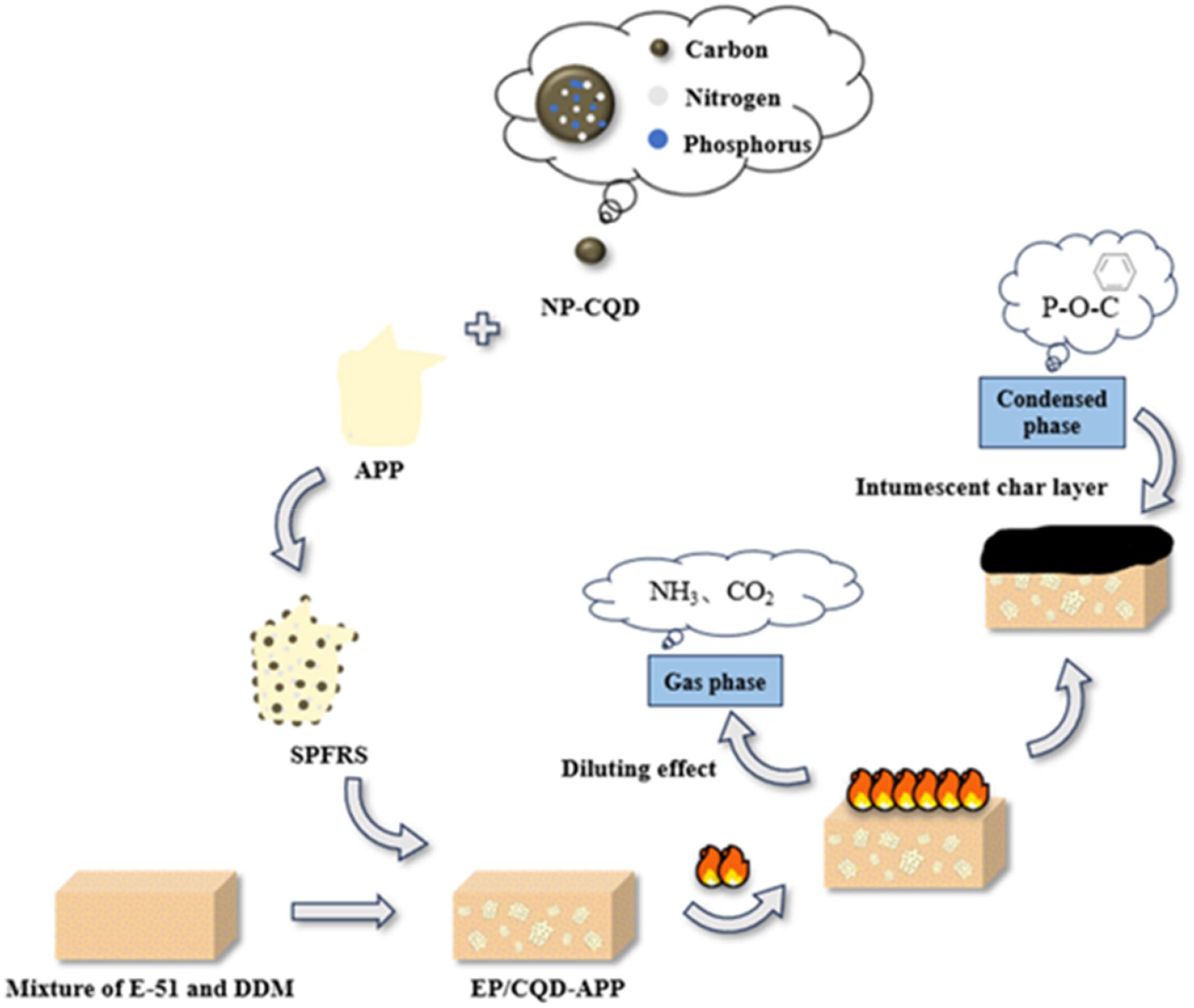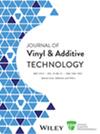N, P co-doped carbon quantum dot and ammonium polyphosphate as the synergistic flame retardant for epoxy resin
Abstract
An N, P co-doped carbon quantum dot (NP-CQD) was prepared using citric acid as the carbon source and hexachlorotripolyphosphonitrile as the nitrogen and phosphorus source. The structure and morphology of NP-CQD were characterized. Subsequently, NP-CQD was blended with ammonium polyphosphate (APP) to come into being a synergistic phosphorus-nitrogen flame retardant system (SPFRS). The SPFRS was applied in epoxy resin (EP) to enhance the flame retardancy of EP. Thermal stability, flame retardancy, combustion behavior, and char residue morphology of the EP samples were determined by multiple testing methods such as thermogravimetric analysis, vertical burning (UL-94) and limiting oxygen index (LOI) tests, microscale combustion calorimetry test, and scanning electron microscopy. When the weight ratio of NP-CQD to APP was kept at 1:9 and 8% SPFRS was added to EP, the obtained flame-retardant EP (EP/CQD-APP2:18) passed the UL-94 V-0 level and the LOI value of EP/CQD-APP2:18 reached 33.2%. The MCC test showed that the heat release capacity (HRC) of EP/CQD-APP2:18 was reduced by 48.7% compared with pure EP. Morphology observation on the char residue of EP/CQD-APP2:18 after the UL-94 test indicated that the addition of SPFRS promoted the formation of the dense char residue layer to improve the flame retardancy of EP.
Highlight
- An N, P co-doped carbon quantum dot (NP-CQD) was prepared and applied as a flame retardant.
- NP-CQD and ammonium polyphosphate (APP) showed synergistic flame retardancy in epoxy resin.
- The proper weight ratio of NP-CQD to APP was 1:9.



 求助内容:
求助内容: 应助结果提醒方式:
应助结果提醒方式:


